For Lent, I’m giving up something big: the church I always knew. And, unlike past Lenten disciplines that ended on Easter, this change is one I expect to be permanent.
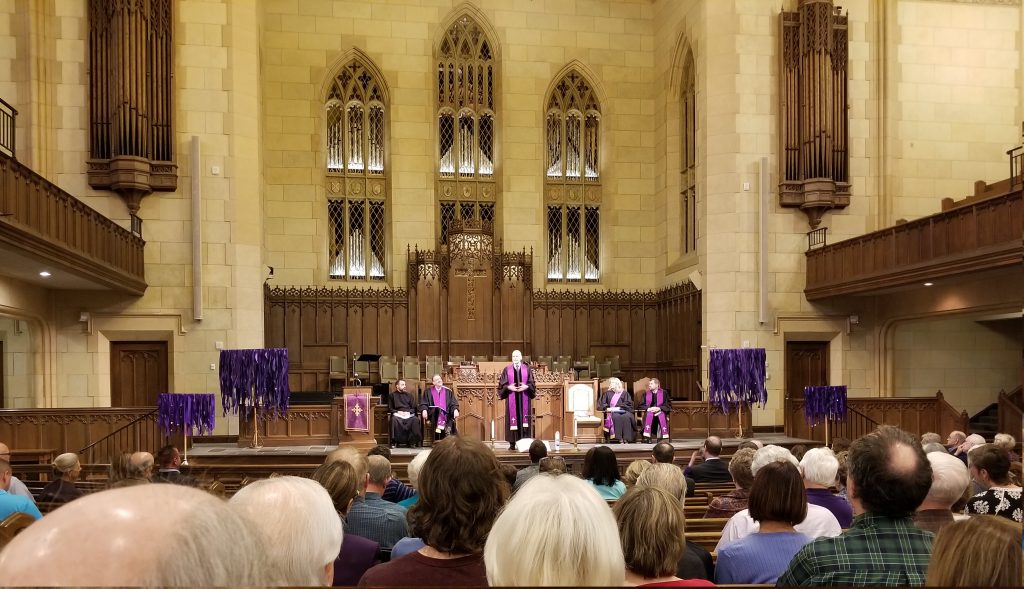
photo by Greg Smith
Indoor Sacred Spaces as Primary
From birth through childhood, adolescence, young adulthood and into middle age I have participated in weekly Sunday morning worship almost every week of every year of my life. At least 98% of those worship services occurred indoors within the walls of congregations I served, was a member of, or was visiting. The sacred spaces that housed these experiences varied significantly in size, seating configuration, and overall style. These spaces, however, were set aside by the congregations for use as worship space and named accordingly, most often as sanctuary. The second most common space was often a fellowship hall or similar intentionally multipurpose space that was reserved for use as a worship space on Sunday morning.
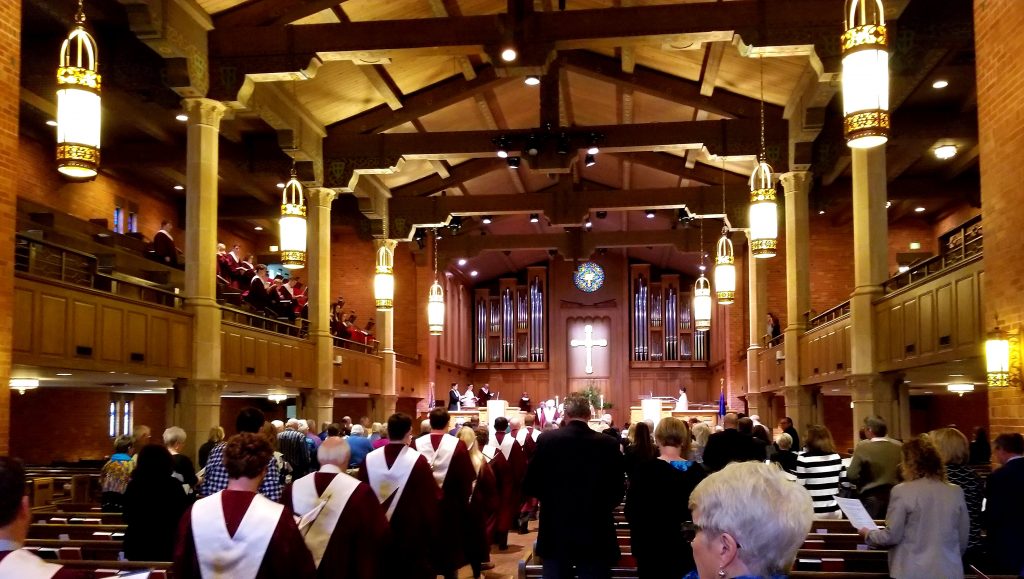
photo by Greg Smith
Since I’ve spent my entire life in congregations affiliated with what most have called Mainline Protestantism (notably I gave up Mainline Protestantism last week), I’m most familiar with services occurring in a sacred space with pews for seating and both a piano and pipe organ for musical accompaniment.
My Old Normal
During 2019 and into early 2020, I worshipped at First Presbyterian Church in Fort Worth, TX and at Cathedral of Hope United Church of Christ in Dallas, TX.
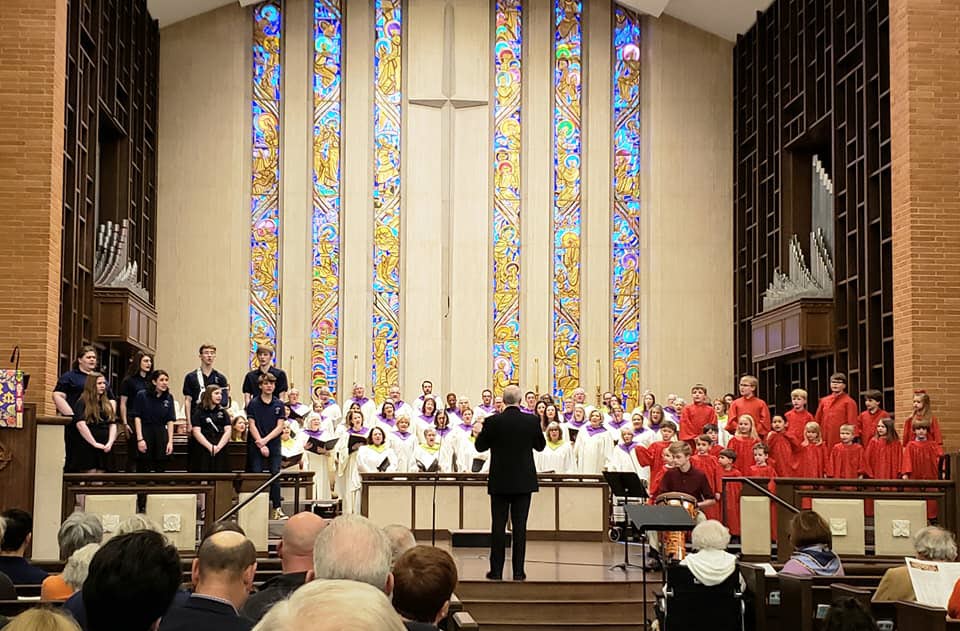
photo by Greg Smith
My final experiences in the sanctuary of First Presbyterian occurred in late February 2020. On Sunday, February 23, 2020, I worshipped in the sanctuary as part of the 11:00 a.m. service and attended a special concert featuring all of the congregation’s choirs that afternoon. I returned again on Wednesday, February 26, 2020, for an evening Ash Wednesday service.
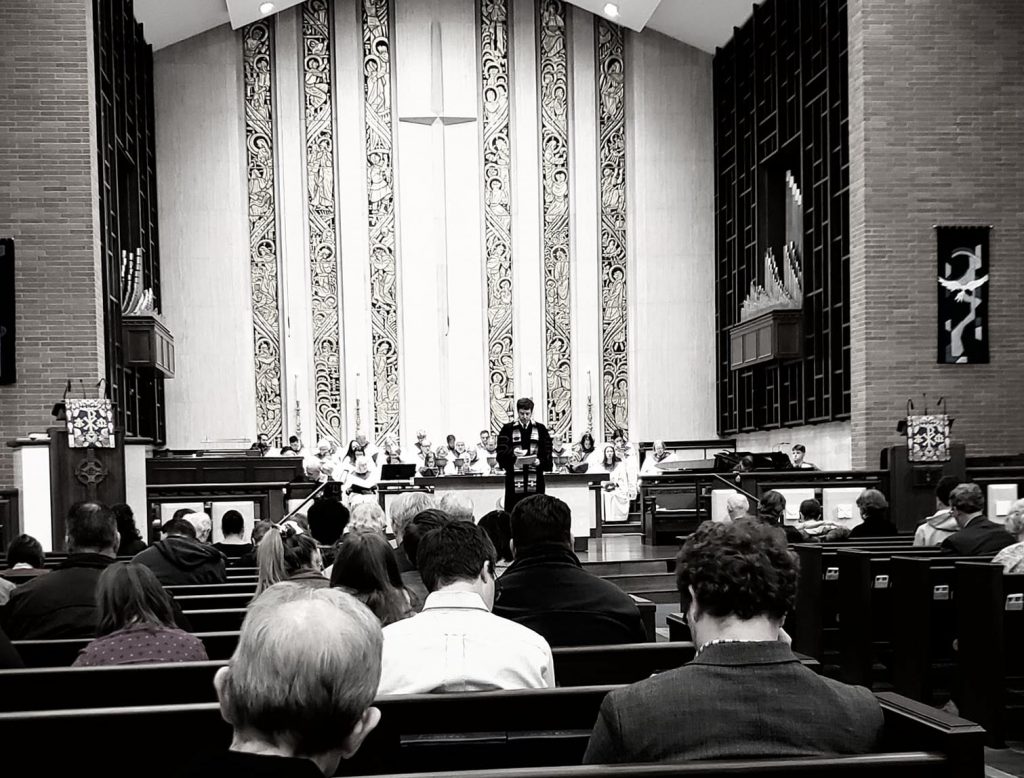
photo by Greg Smith
My final experience in the sanctuary of Cathedral of Hope occurred on March 1, 2020, when I attended the 11:00 a.m. service.
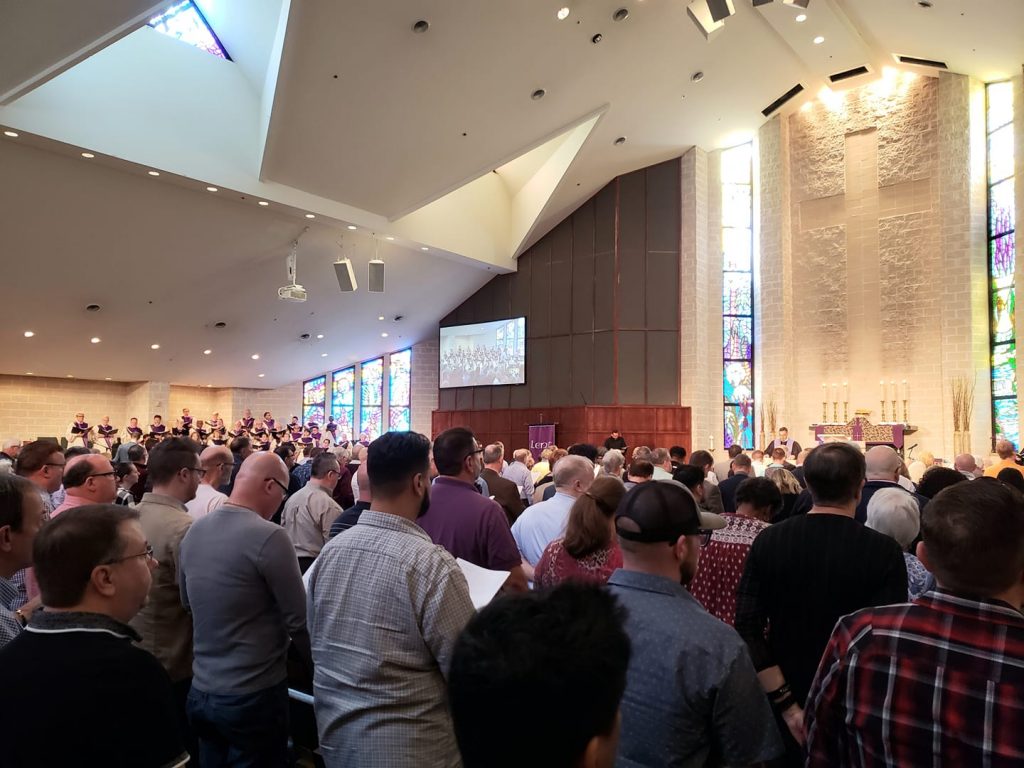
photo by Greg Smith
Disruption
While I had increasing awareness of forms of worship beyond those that required my physical presence in a specific indoor sacred space at a specific time, that awareness had not impacted my behavior. Prior to the onset of the COVID-19 pandemic the only way technology had changed my worship attendance was to provide me with access to experiences to supplement my in person experiences in the congregations I served and/or belonged to through membership.
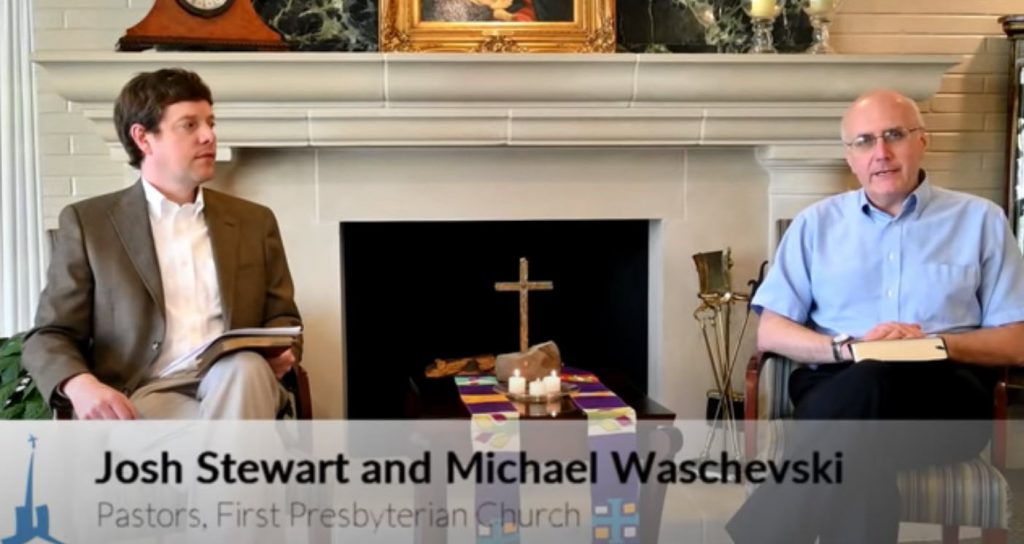
screenshot captured on March 6, 2021
When the pandemic arrived all of the churches I’ve called home throughout my lifetime stopped offering in person worship inside their buildings. The two congregations I was suddenly cut off from entering, quickly shifted to provide online worship experiences. For First Presbyterian Church this was a radical shift that involved much learning, since services had not previously been offered online in real time or even through recordings. For Cathedral of Hope this was much easier since the congregation has had a vital online ministry for many years, including posting worship service recordings on their website and their YouTube channel.

screenshot captured on March 6, 2021
Toward a Next Normal
It has now been over a year since I last gathered with other people in an indoor sacred space for worship.
During that time I have spent more time than normal outdoors, and found many of those experiences were atypically meaningful.
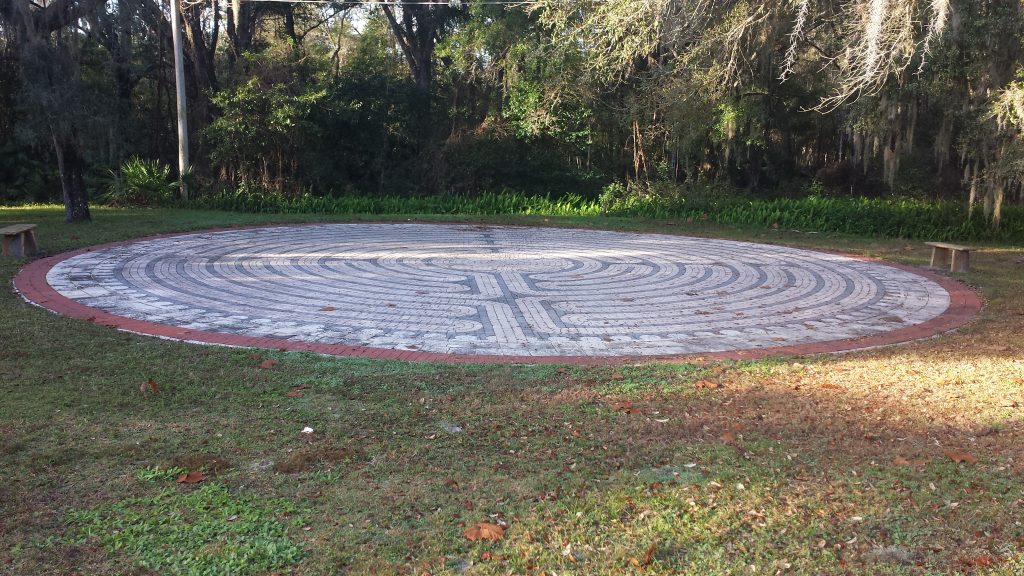
photo by Greg Smith
As weeks stretched into months and as life with social distancing as normative reached a year, I began to realize it was time to start discerning what a next normal would be in many areas of life, including worship.
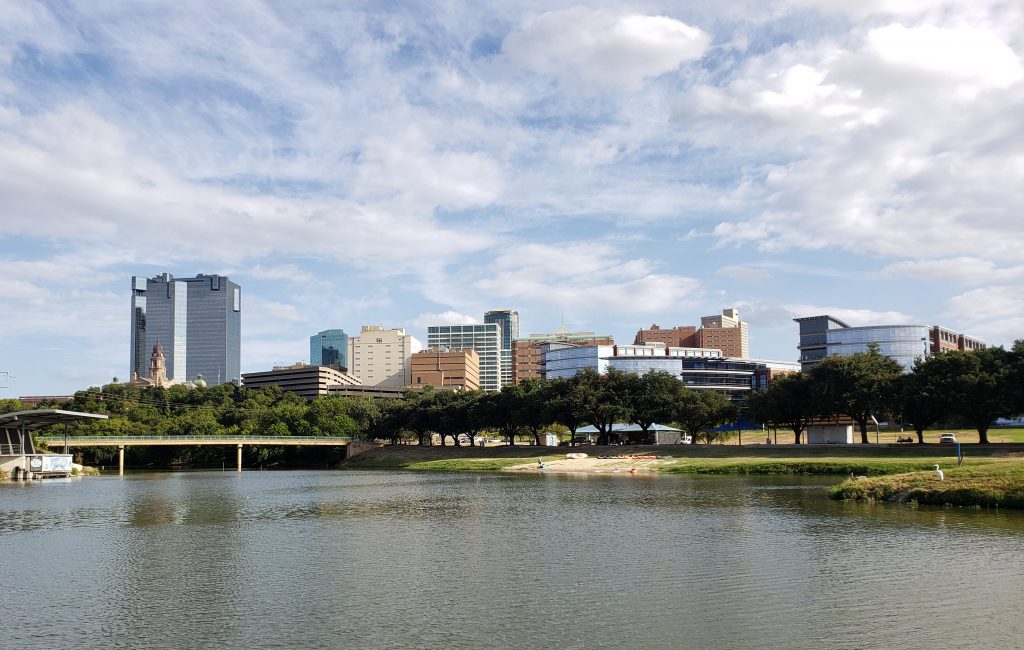
photo by Greg Smith
Future of Worship
When it is again safe for people to gather indoors to worship together, I imagine many people will opt to do so. And, I also know that many who have not stepped foot in a church in a year or more will either not return or will not return as often.
When I think about worship in Mainline Protestant congregations over the next three to five years, I assume
- Indoor as primary will be replaced by hybrid as normative. After a year of online worship, it is reasonable to expect that congregations will continue to offer an online option. Going forward, many congregations may find a greater number of people are reached by a hybrid approach that offers concurrent in person (which could be 100% indoors, 100% outdoors, or offerings that allow people to choose to be indoors or outdoors) and online worship options. The ongoing online offering will reach those unable to attend in person due to health, travel, or other personal limitations as well as those who may flex their schedule and alternate between in person and online attendance. And, it will almost certainly become the initial entry point for future newcomers considering in person attendance.
- Changes will occur more often and be implemented more rapidly. While this will likely be true of church life in general, I think it will be most notable in worship. The innovation required for the season when in person worship was not possible will continue well after it ends. In larger congregations this will likely provide opportunities for more variety within in existing services as well as an easier pathway for new worship experiences to be launched. Some smaller congregations may be more strategic in downsizing to smaller facilities and/or offering in person gatherings on a church campus less frequently. And, all congregations will evolve in sacramental practices with many building from new guidance that will be issues in the future by their respective denominations.
I’ve learned a good deal over the last year about worship, and expect to learn even more in the year ahead. And, I look forward to being engaged in worship in a variety of settings (just yesterday I attended my first in person, outdoor service since the pandemic began, including ones I’ve not yet even imagined.